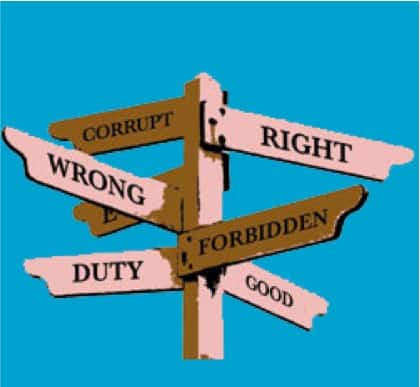Decision-Making in an Uncertain World
Navigating the Complex Terrain: Balancing Beliefs and Reality
In our intricate and uncertain world, decision-making often hinges on incomplete or ambiguous information. How do we navigate this challenge? One approach is to lean on our beliefs—those mental shortcuts, or heuristics, that help us simplify and interpret reality. However, these cognitive shortcuts aren’t infallible; they can introduce errors and biases. In this essay, I will delve into the nature and limitations of both common sense and abstract beliefs, exploring how they intersect with logic and evidence. Finally, I’ll address the enduring tendency to substitute beliefs for facts, even when evidence suggests caution.
Common Sense: A Double-Edged Sword
Common sense, that intuitive knowledge acquired through implicit learning, personal experience, and emotional reactions, serves as our compass. Yet, it can also mislead. Often rooted in common observations or generalizations—like assuming childbirth because someone has a child or equating yawning with sleepiness—common sense has its pitfalls. Remember when “the Sun revolves around the Earth” was common sense? Although no longer accepted, it illustrates how even seemingly obvious truths can evolve. While common sense aids quick judgments, it can mislead us, especially in unfamiliar, complex, or contradictory situations.
Beyond Concrete: Abstract Beliefs
As we mature, our reliance extends beyond concrete common sense. Abstract beliefs emerge—statistical and generalized, based on assumptions and interpretations. Unlike universal common sense, these beliefs are more distant from personal experience and harder to validate. Yet, they shape our thinking and behavior. Whether navigating probabilities, societal norms, or ethical dilemmas, abstract beliefs guide us, sometimes subtly, sometimes profoundly.
In this exploration, we’ll journey through the interplay of beliefs, logic, and evidence, acknowledging that while beliefs simplify our world, they also challenge our pursuit of truth.
Navigating the Nexus: Common Sense, Abstract Beliefs, and Logic
1. Vague Beliefs and Their Pitfalls
Our beliefs often employ vague or approximate terms, sidestepping precise numbers or percentages. For instance, consider statements like “most Americans want stricter gun laws” or “women are more prone to depression than men.” These broad assertions help us grapple with the complexities of our world. Yet, they can mislead us, especially if sourced from unreliable, outdated, or incomplete information.
2. Logic: The Beacon of Reason
Logic, that systematic and rigorous method of reasoning, adheres to the rules of validity and truth. Validity ensures that conclusions logically follow from premises, irrespective of their truthfulness. Truth, on the other hand, demands that both premises and conclusions align with facts or evidence. Logic serves as our bulwark against fallacies and inconsistencies. However, applying it can be daunting—especially when time, resources, or expertise hinder our ability to scrutinize every claim or argument.
3. The Delicate Balancing Act
How do we harmonize common sense, abstract beliefs, and logic? Sometimes, we elevate our everyday convictions to the status of premises in a logical argument, treating them as absolute truths. Beware, though, for this can lead to flawed reasoning.
4. A Cautionary Tale
Consider this example: Crime rates surge as more immigrants arrive in a country. The conclusion drawn? Immigration causes crime. Here, an association (a mere correlation or coincidence) ascends to the status of a premise (a cause or reason) in a logical argument. The case for restricting immigration seems logical. But pause. Two simultaneous events don’t necessarily imply causation. Other factors—poverty, education gaps, or lack of opportunity—may drive crime rates. Moreover, immigration’s dynamics intertwine with war, persecution, and climate change. And here’s the kicker: facts reveal that immigration doesn’t inherently breed crime.
In our quest for understanding, let’s wield logic with care, acknowledging its power and its potential pitfalls.
Balancing Beliefs and Reality: Navigating the Immigration-Crime Conundrum
A recent study conducted by the Department of Justice meticulously examined the crime rates among undocumented immigrants in Texas. Brace yourself for the revelation: these immigrants were less than half as likely to be arrested for violent crimes and less than a quarter as likely to face arrest for property crimes compared to their U.S.-born counterparts. In essence, immigrants emerge as less criminal than the general population, not more. So, the belief that immigration fuels crime isn’t merely incorrect; it’s unjust. By clinging to this fallacy, we unfairly judge an entire group based on a false premise, conveniently ignoring the evidence that contradicts it. This isn’t logical reasoning; it’s a slippery slope into fallacious thinking. Moreover, it doesn’t serve us well—it stokes anger and fear without addressing the real issue. If we truly seek clarity, we must rely on facts, not mere beliefs. And the facts resoundingly assert that immigration isn’t the culprit behind rising crime rates.
The Crucial Dance: Common Sense, Abstract Beliefs, and Logic

Our lives—whether in politics, economics, health, education, or social matters—entail a delicate waltz between common sense, abstract beliefs, and logic. We’re bombarded with information and arguments that often appeal to our intuition or ingrained beliefs. Yet, these may not always align with logic or factual accuracy. Consider the skeptic who dismisses evolution, saying, “I can’t fathom our descent from monkeys.” This fallacy sidesteps the robust evidence and reasoning supporting evolutionary theory, relying instead on personal feelings or intuition.
Another example is in Other Information at the bottom of the post.
The Dilemma of Validation
In our daily encounters, we grapple with situations demanding swift decisions. Common sense and abstract beliefs often come to our rescue, but validating them isn’t always feasible. Time constraints or lack of resources hinder our fact-checking endeavors. Here lies the crux: our mental shortcuts—while expedient—can harbor errors and biases. To navigate this minefield, we must remain vigilant. Seek out and evaluate the logic and evidence that either bolster or challenge our beliefs. Only then can we tread the path toward informed understanding.
The Dance of Determination: When Beliefs Shape Our Actions
“Back in the day,” high schoolers would quip, “I was ‘choiced’.” A seemingly paradoxical phrase, it whispered of agency while concealing its absence. The truth? Choice was thrust upon them, and they merely acquiesced. Yet, this curious interplay between beliefs and reality underscores our human condition. For without acting as if our convictions were true, we’d remain paralyzed—mere spectators in life’s grand theater.
Infallible Tools and Their Limitations
Common sense and abstract beliefs—our trusty companions—illuminate the labyrinthine world. But they’re not infallible. Logic, our stern guide, beckons us to test and refine our judgments. To avoid the pitfalls of fallacies and prejudices, we must tread carefully. As we hone our critical thinking, we metamorphose into informed, rational citizens.
The Art of Persuasion: Beyond Logic
Yet, persuasion dances to a different tune. Logical arguments, like this very essay, rarely sway hearts. Instead, we wield a subtler weapon: common beliefs. Consider this: I believe high school educational requirements should align with job prospects for students opting for work over further education.
Now, ponder: “High school dropouts cause the most crimes. We must invest in our schools.” These sentences, while illogical under scrutiny, resonate with those who crave simplicity. (A touch of Machiavelli, perhaps?) The extra funds? They’ll reshape curricula, empowering future graduates seeking jobs—not just degrees—and offering a lifeline to potential dropouts.
In this delicate dance, we navigate the currents of belief, logic, and persuasion. And perhaps, just perhaps, we’ll sway the world toward a wiser, more compassionate rhythm.
Other Information
Image of Charles Darwin as an ape. By Unknown author – Originally published in The Hornet magazine; this image is available on University College London Digital Collections (1886), Public Domain, https://commons.wikimedia.org/w/index.php?curid=23436

Image on left source: The U.S. Food and Drug Administration – “Keep FDA Off The Farm” (FDA 140), Public Domain, https://commons.wikimedia.org/w/index.php?curid=33628123
Context: In 1995, FDA’s assertion of authority to regulate tobacco drew heavy opposition from the tobacco industry, which erupted into lawsuits and slogans urging “Keep FDA Off the Farm.” Tobacco farmers objected to the rule, but ignored any information that mitigated their point. The FDA is the federal agency responsible for ensuring the safety of the food supply in the United States. I would not want the FDA to stop the enforcement of farm standards for the safe growing, harvesting, packing, and holding of fruits and vegetables grown for human consumption.
Thinking Fast and Slow by Daniel Kahneman. Many heuristics or short-cuts that are not logical, yet we use in our mental worldview on which we make our decisions.



